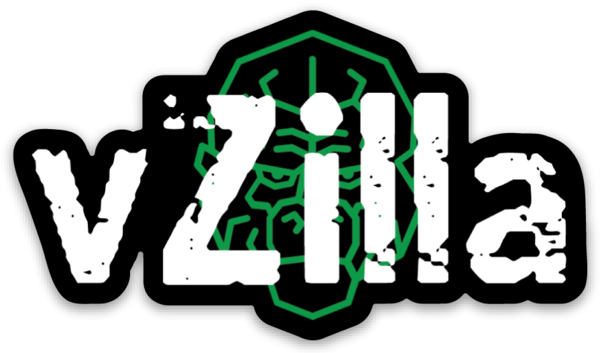Project Shift powered by NetApp was a collaboration of many different divisions within NetApp to be able to shift a workload from one hypervisor to another, MAT4Shift provided he ability to go from a VMware ESXi environment to a Microsoft Hyper-V environment leveraging NetApp FlexClone Technologies and Data ONTAP.
This now brings me onto OnCommand Shift, this product has evolved from the MAT4Shift and the whole Project Shift collaboration from NetApp. This product provides a complete end-to-end VM conversion solution without the requirement to move any data. It leverages the Data ONTAP Powershell Toolkit to bulk convert virtual machines. This process though now not only can go from VMware ESXi to Microsoft Hyper-V but also the other way.
First the why is this, why if on day one you decide to go with VMware ESXi should you be forced to stay there and the same with Microsoft Hyper-V both have their good and bad points and a lot of enterprise customers I have worked at in the past have hosts of both flavours. But they are completely silo’d and to move freely between the two has been a lengthy time consuming and a costly task.
The second is how, OnCommand Shift can make the above “why” easier through reducing cost of that migration project it can stop that task from being a lengthy drawn out planned project.
Reduce Cost – Costs can be reduced with data portability and also being able to dedicate the right resources to the platform of choice.
Speed and Efficiency – with OnCommand Shift it is now possible to convert VMs bi-directionally between VMware ESXi and Microsoft Hyper-V, automated and with near on zero touch to the VM operations minimising the downtime required on current existing migrations. To bolster that rather than the migration taking hours as they do currently it allows for conversions in minutes rather than hours.
The whole process for OnCommand Shift utilises NetApp Snapshots and NetApp FlexClone technology, currently only NAS based storage protocols are a viable option for this tool. The steps in which the process takes are as follows:
- <li “color:black;mso-margin-top-alt:auto;mso-margin-bottom-alt:=”” auto;line-height:normal;mso-list:l0=”” lfo1;tab-stops:list=”” 36.0pt”=””>Collects and stores all VM information<li “color:black;mso-margin-top-alt:auto;mso-margin-bottom-alt:=”” auto;line-height:normal;mso-list:l0=”” lfo1;tab-stops:list=”” 36.0pt”=””>Snapshot VM – Backup of VMs and network/disk settings before conversion<li “color:black;mso-margin-top-alt:auto;mso-margin-bottom-alt:=”” auto;line-height:normal;mso-list:l0=”” lfo1;tab-stops:list=”” 36.0pt”=””>Remove Hypervisor integration tools<li “color:black;mso-margin-top-alt:auto;mso-margin-bottom-alt:=”” auto;line-height:normal;mso-list:l0=”” lfo1;tab-stops:list=”” 36.0pt”=””>Converts VM<li “color:black;mso-margin-top-alt:auto;mso-margin-bottom-alt:=”” auto;line-height:normal;mso-list:l0=”” lfo1;tab-stops:list=”” 36.0pt”=””>Restores Network configurations and VLAN settings
Hardware
- <li “color:black;mso-margin-top-alt:auto;mso-margin-bottom-alt:=”” auto;line-height:normal;mso-list:l1=”” lfo1;tab-stops:list=”” 36.0pt”=””>NetApp FAS 2240 controller or higher
- <li “color:black;mso-margin-top-alt:auto;mso-margin-bottom-alt:=”” auto;line-height:normal;mso-list:l1=”” lfo1;tab-stops:list=”” 72.0pt”=””>Clustered Data ONTAP 8.2 or later<li “color:black;mso-margin-top-alt:auto;mso-margin-bottom-alt:=”” auto;line-height:normal;mso-list:l1=”” lfo1;tab-stops:list=”” 72.0pt”=””>NFS and CIFS/SMB licensed on the controller
<li “color:black;mso-margin-top-alt:auto;mso-margin-bottom-alt:=”” auto;line-height:normal;mso-list:l1=”” lfo1;tab-stops:list=”” 36.0pt”=””>Physical or virtual server to control workflow and convert virtual machines
- <li “color:black;mso-margin-top-alt:auto;mso-margin-bottom-alt:=”” auto;line-height:normal;mso-list:l1=”” lfo1;tab-stops:list=”” 72.0pt”=””>2 vCPUs<li “color:black;mso-margin-top-alt:auto;mso-margin-bottom-alt:=”” auto;line-height:normal;mso-list:l1=”” lfo1;tab-stops:list=”” 72.0pt”=””>4GB RAM<li “color:black;mso-margin-top-alt:auto;mso-margin-bottom-alt:=”” auto;line-height:normal;mso-list:l1=”” lfo1;tab-stops:list=”” 72.0pt”=””>Application: 250MB free disk space<li “color:black;mso-margin-top-alt:auto;mso-margin-bottom-alt:=”” auto;line-height:normal;mso-list:l1=”” lfo1;tab-stops:list=”” 72.0pt”=””>Conversion storage: 250GB (Minimum) / 500GB (Preferred) free disk space
Software
- <li “color:black;mso-margin-top-alt:auto;mso-margin-bottom-alt:=”” auto;line-height:normal;mso-list:l0=”” lfo2;tab-stops:list=”” 36.0pt”=””>Data ONTAP PowerShell Toolkit version 3.0.1 or higher<li “color:black;mso-margin-top-alt:auto;mso-margin-bottom-alt:=”” auto;line-height:normal;mso-list:l0=”” lfo2;tab-stops:list=”” 36.0pt”=””>PowerCLI 5.1 or higher<li “color:black;mso-margin-top-alt:auto;mso-margin-bottom-alt:=”” auto;line-height:normal;mso-list:l0=”” lfo2;tab-stops:list=”” 36.0pt”=””>Microsoft Hyper-V PowerShell cmdlets<li “color:black;mso-margin-top-alt:auto;mso-margin-bottom-alt:=”” auto;line-height:normal;mso-list:l0=”” lfo2;tab-stops:list=”” 36.0pt”=””>Microsoft .NET Framework 4.5
Supported VMware ESXi Configurations
- <li “color:black;mso-margin-top-alt:auto;mso-margin-bottom-alt:=”” auto;line-height:normal;mso-list:l3=”” lfo3;tab-stops:list=”” 36.0pt”=””>5.0<li “color:black;mso-margin-top-alt:auto;mso-margin-bottom-alt:=”” auto;line-height:normal;mso-list:l3=”” lfo3;tab-stops:list=”” 36.0pt”=””>5.1<li “color:black;mso-margin-top-alt:auto;mso-margin-bottom-alt:=”” auto;line-height:normal;mso-list:l3=”” lfo3;tab-stops:list=”” 36.0pt”=””>5.5<li “color:black;mso-margin-top-alt:auto;mso-margin-bottom-alt:=”” auto;line-height:normal;mso-list:l3=”” lfo3;tab-stops:list=”” 36.0pt”=””>6.0 (Not in the first release)
Supported Microsoft Hyper-V Configurations
- <li “color:black;mso-margin-top-alt:auto;mso-margin-bottom-alt:=”” auto;line-height:normal;mso-list:l2=”” lfo4;tab-stops:list=”” 36.0pt”=””>Windows Server 2008R2 Hyper-V<li “color:black;mso-margin-top-alt:auto;mso-margin-bottom-alt:=”” auto;line-height:normal;mso-list:l2=”” lfo4;tab-stops:list=”” 36.0pt”=””>Windows Server 2012 Hyper-V<li “color:black;mso-margin-top-alt:auto;mso-margin-bottom-alt:=”” auto;line-height:normal;mso-list:l2=”” lfo4;tab-stops:list=”” 36.0pt”=””>Windows Server 2012 R2 Hyper-V
I also found this resource quite useful whilst writing this post, it will give you more background as to where Project Shift has developed over the last 12 months.
http://www.esg-global.com/lab-reports/lab-spotlight-netapp-project-shift-dynamic-data-portability/


